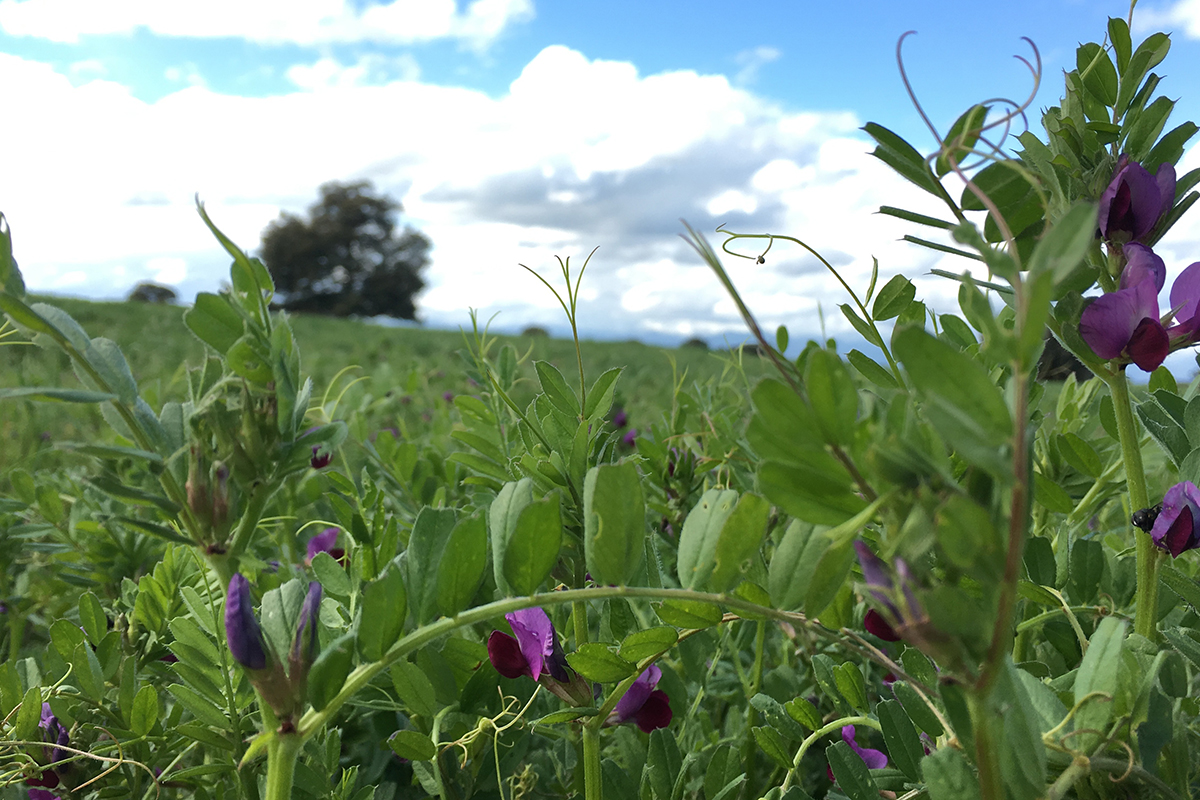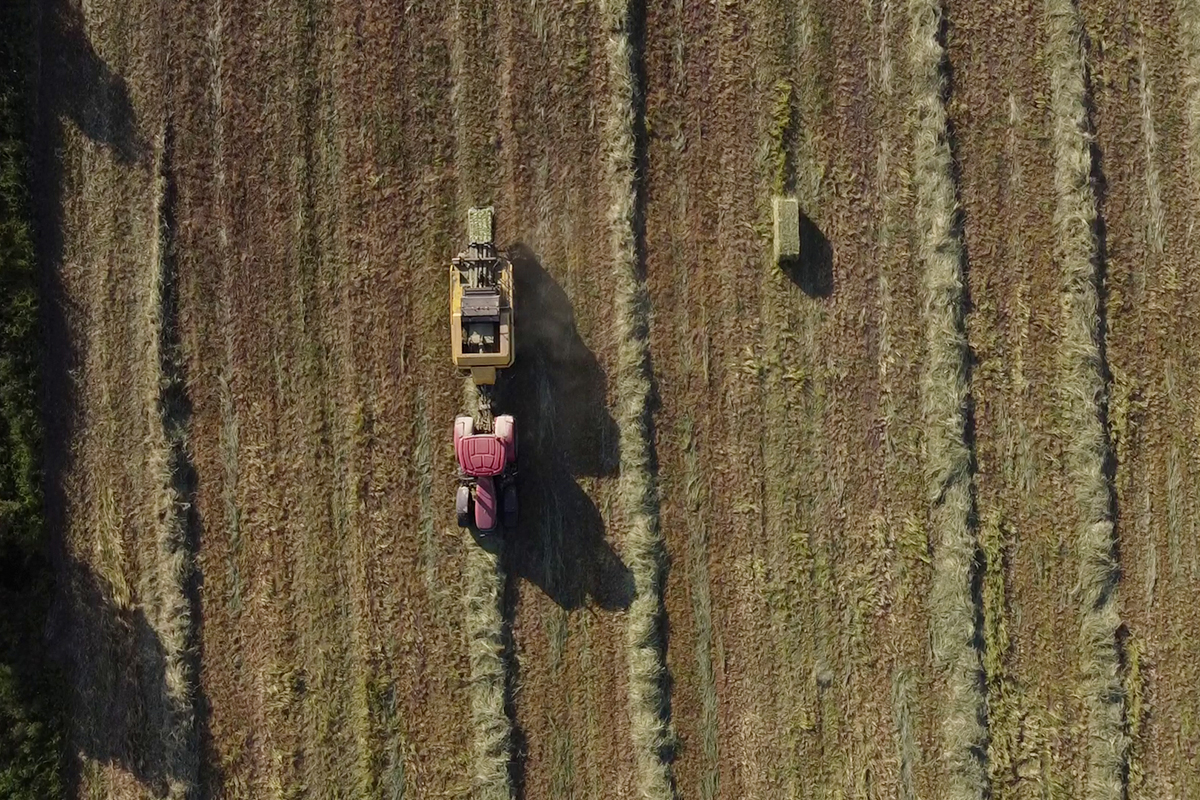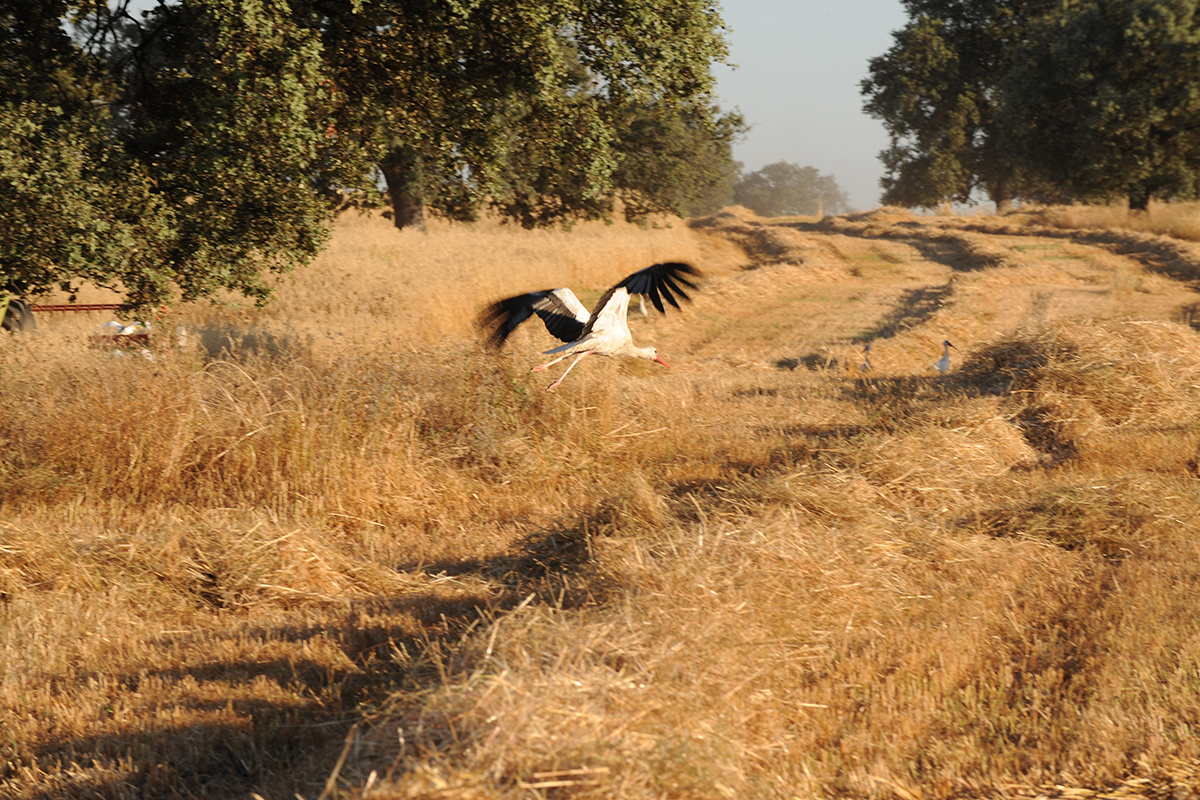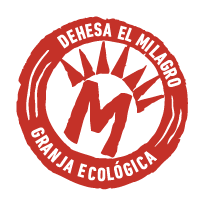Forage and Cereals
In Dehesa El Milagro, we take special care to produce the forages and cereals that will be necessary to feed the farm animals. The closed cycle makes us self-sufficient in a high percentage. Food production is possible thanks to the animal contribution of organic matter we use to supply to our soils.
The system designed for our farm consists of a combination of productions that, in addition, combine crops in each of these productions, making them more resistant to pests, taking advantage of the improvements left by the previous crops and, combined, taking advantage of the nutrients in the soil and leaving less space for the appearance of weeds There is an additional priority in this system, which is the production of spelt and wheat for our flours.

What forages do we produce?
We are based on a mixture of forage based on ray grass [lolium perenne] since we seek for a greater adaptation to the production of the area. It also allows us to have future sprouts that the animals will take advantage of.
Ray grass, vetch and clovers form a combination of species that improve the production and, in addition, we obtain high quality forage that, as the analytics show, gives us very high protein levels, helping the subsequent growth cycle of the animals.

One of our most productive forages is the combination of oats with a high percentage of vetch that gives us similar characteristics, but with simpler varieties. We have a high-quality forage that is different from other mixes but that allows us to have a second crop rotation. It also creates a difference in the landscape with all the implications this has for agronomic biodiversity.
Both crops are mowed while they are still fresh and green, taking great care during the cutting season to seek for the highest protein point. We pay special attention to seed formation, flowering, general and vegetative state, long before the harvest, taking into account the weather forecast. Once the plants are cut and leaves lie on the ground to dry out naturally, getting wet would be one of the worst effects that our forages could have, so the cutting moment must be calculated very well.

What cereals do we produce?
Apart from the aforementioned spelt and wheat productions for our flours, we produce cereals to feed the farm animals. Again, the production of protein is very important, so we have introduced legumes in our grain production Barley, oats, wheat, vetch, pea, lentil….
The secret of the whole design is rotations and combinations. Productions and soil have a win/win relationship.

